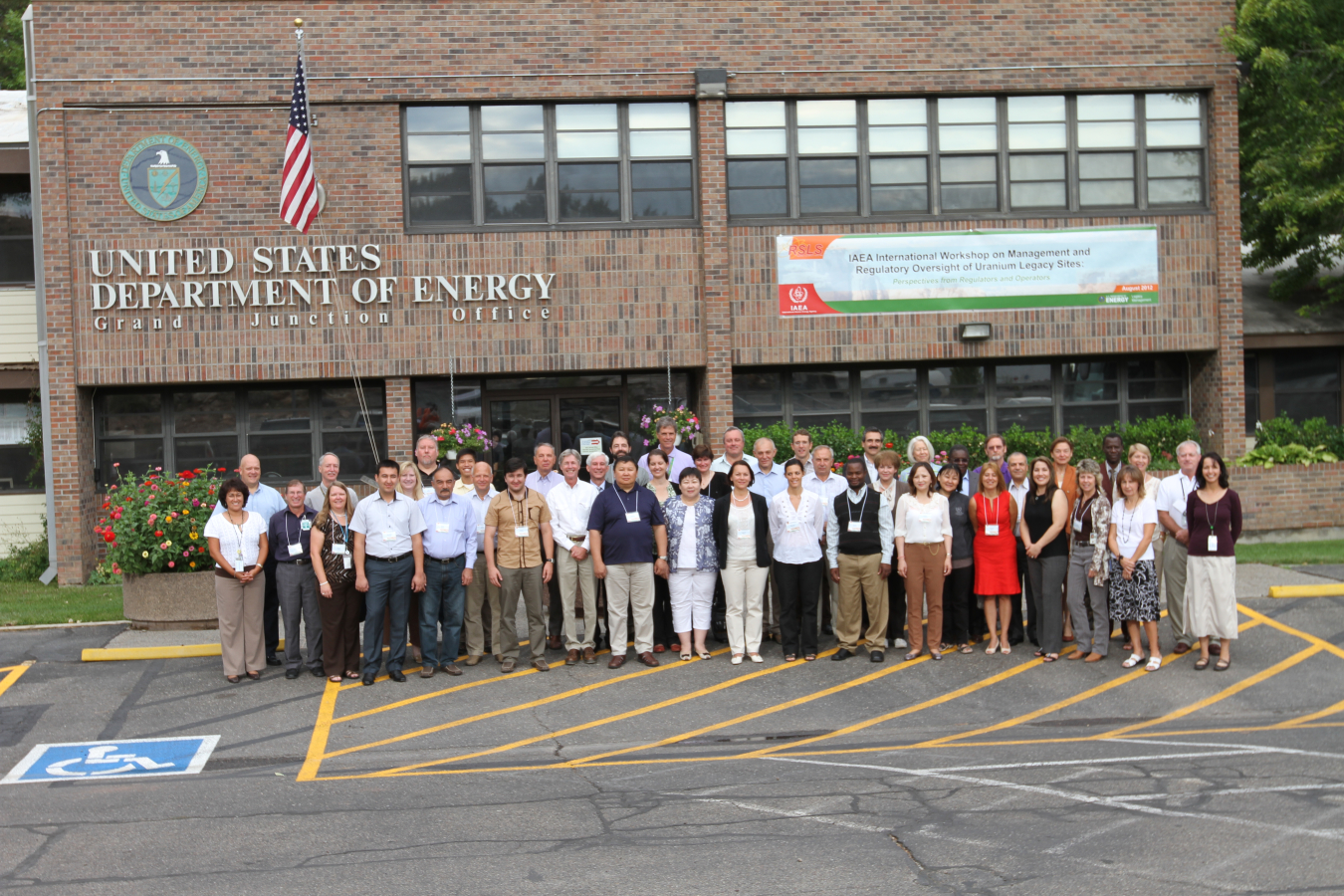LM working through COVID-19 challenges while engaging international counterparts in remediation missions.
February 2, 2022
Grand Junction, Colorado, is in proximity to many Office of Legacy Management (LM) sites, which makes it a central point from which visitors can see LM’s various activities. In this photo from August 2012, LM welcomes a delegation from the International Atomic Energy Agency (IAEA) at the Grand Junction office. The conference was an international workshop titled Management and Regulatory Oversight of Uranium Legacy Sites: Perspectives from Regulators and Operators.
One of the Office of Legacy Management’s (LM) core commitments is to protect human health and the environment. LM not only supports remediation missions across the United States but across the world. LM collaborates with professionals and international groups to support long-term stewardship, particularly of uranium mining and milling sites in places such as Eastern Europe, Central Asia, and closer to home, in Canada.
In addition to participating in workshops and giving presentations, LM has welcomed visitors from other countries who come to see LM sites. LM has successfully assisted with various remediation efforts and consistently searches for new ways to help communities across the globe.
“It is not a one-way street, either,” said David Shafer, LM’s technical director for Long Term Stewardship. “For example, many countries were addressing hazards at abandoned uranium mines well before LM began its Defense-Related Uranium Mine program. The success of other countries helped us develop our program.”
Since 2010, LM has actively engaged in groups such as the International Atomic Energy Agency (IAEA), an intergovernmental agency within the United Nations that focuses on global nuclear cooperation. LM is providing technical support to the IAEA to address uranium sites in Central Asian republics that were part of the former Soviet Union through the IAEA Coordination Group on Uranium Legacy Sites (CGULS).
LM will also be contributing to a new IAEA “safety guide” on post-closure management of remediated sites as part of the Forum on Regulatory Supervision of Legacy Sites (RSLS). LM began participating in RSLS in 2010 to support remediation of contaminated sites, many of which operated during the Cold War, but were abandoned afterward. The IAEA as well as the Nuclear Energy Agency (NEA) are also increasingly recognizing the importance of stakeholder involvement in decisions on cleanup of these sites. LM is sharing what it has learned on effective stakeholder engagement.
Shafer added, “There are obviously cultural differences in how people interact in different countries but providing for stakeholder input and acceptance before cleanup of a site begins is increasingly important around the world.”
To support many of its international activities, LM and Legacy Management Strategic Partners (LMSP) have traveled to other countries and hosted personnel from these various organizations in Grand Junction, Colorado. The proximity of many LM sites to Grand Junction makes it a central point from which visitors can see the types of activities that LM performs at its sites.
Although COVID-19 delayed some of LM’s international work, the IAEA as well as the Nuclear Energy Agency have continued to interact on virtual platforms to continue their collaborative efforts.
Looking ahead in 2022, LM’s International Program will participate in various meetings, webinars, and continue its collaboration and mutually beneficial exchanges with international organizations. LM and LMS are hoping to host Japan’s Nuclear Damage Liability Facilitation Fund (NDF) delegation’s visit to Rocky Flats Site in Colorado. The Japan NDF is interested in how DOE, regulators, and stakeholders agreed on an “end state” for Rocky Flats. Although significant progress has been made, agreeing on an end state could help to complete remediation of some areas around the Fukushima Daiichi Nuclear Power Plant following the accident there in 2011. The IAEA has also asked LM to host a workshop and site visits from representatives of Kyrgyzstan, Tajikistan, and Uzbekistan, now independent countries but formerly part of the Soviet Union.
While contingent upon COVID-19 developments, these visits will be used to discuss how decisions on site remediation were made, what is required to ensure that the sites continue to protect public health and safety today, and even how sites have been put into beneficial reuse.

